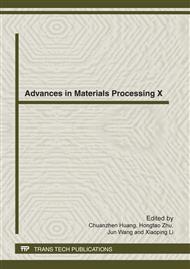p.377
p.385
p.391
p.397
p.403
p.410
p.417
p.423
p.429
Study on Surface Roughness and Friction during Hot Rolling of Stainless Steel 301
Abstract:
A well-defined boundary condition is important for generating an accurate model for simulating metal forming process. It is important to characterize the features of the oxide scale in hot rolling of stainless steel strip. Short time oxidation tests in humid air with water vapor content of 7.0 vol. % were carried out using Gleeble 3500 thermo-mechanical simulator. The deformation, surface morphology of oxide scale, and the friction in hot rolling were studied by conducting hot rolling tests. The results show that the surface roughness decreases with an increase of reduction. The effect of oxide scale on friction and surface roughness transfer in hot rolling depends on oxide scale generated during reheating. When reheating time is increased, the average thickness of oxide scale increases and a relatively rough surface was obtained after hot rolling. Thick oxide scale of 301 steel shows the high lubricative effect.
Info:
Periodical:
Pages:
403-409
Citation:
Online since:
April 2012
Authors:
Keywords:
Price:
Сopyright:
© 2012 Trans Tech Publications Ltd. All Rights Reserved
Share:
Citation:


